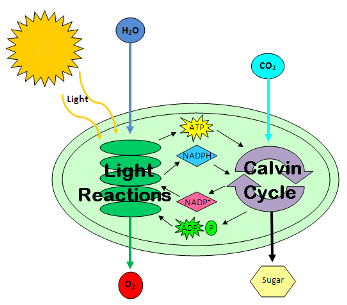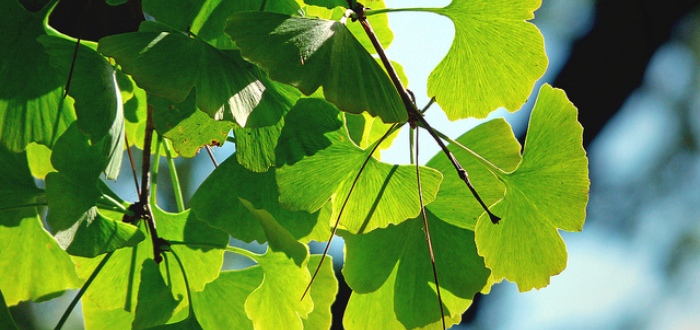Nutrition
 The Ginkgo tree
transports its nutrients and water the way most
other vascular plants transport theirs, through the xylem and the
phloem. The xylem is used for transporting water and the phloem
is used for carrying nutrients throughout the tree. The xylem
pulls the water up through the tree due to water properties such
as adhesion, cohesion, tension, and evaporation. The phloem
pushes the nutrients that it makes through photosynthesis down
towards the roots.
The Ginkgo tree
transports its nutrients and water the way most
other vascular plants transport theirs, through the xylem and the
phloem. The xylem is used for transporting water and the phloem
is used for carrying nutrients throughout the tree. The xylem
pulls the water up through the tree due to water properties such
as adhesion, cohesion, tension, and evaporation. The phloem
pushes the nutrients that it makes through photosynthesis down
towards the roots.
Almost all plants, including Ginkgo biloba, must go through
photosynthesis to obtain nutrients for themselves.
Photosynthesis is the process by which sunlight and water enter
the leaves of plants (specifically, the chlorophyll organelles)
and from there they go through a series of reactions to create ATP and NADPH. These reactions also create oxygen gas as a waste
product.
 ATP, NADPH, and carbon dioxide then travel through the
Calvin cycle to produce sucrose (mostly in the form of glucose)
for the rest of the plant to use. After making glucose in the
leaves, the plant uses the phloem to push the nutrients down
throughout the tree and even into the roots where the endotrophic
mycorrhizae (refer to INTERACTIONS) are located. A few
organisms that also go through photosynthesis are
Cyanobacteria,
the
Olive tree,
ATP, NADPH, and carbon dioxide then travel through the
Calvin cycle to produce sucrose (mostly in the form of glucose)
for the rest of the plant to use. After making glucose in the
leaves, the plant uses the phloem to push the nutrients down
throughout the tree and even into the roots where the endotrophic
mycorrhizae (refer to INTERACTIONS) are located. A few
organisms that also go through photosynthesis are
Cyanobacteria,
the
Olive tree,
and the
Artichoke plant.
 Another way Ginkgo biloba obtains nutrients is through interactions with the endotrophic mycorrhizae. This fungus wraps
itself around the roots of the Ginkgo tree and helps to feed
nutrients into the tree, such as nitrogen and phosphorus. The
Ginkgo aids the fungus by pushing some of its sucrose down
close enough to where the fungal hyphae can reach it.
Another way Ginkgo biloba obtains nutrients is through interactions with the endotrophic mycorrhizae. This fungus wraps
itself around the roots of the Ginkgo tree and helps to feed
nutrients into the tree, such as nitrogen and phosphorus. The
Ginkgo aids the fungus by pushing some of its sucrose down
close enough to where the fungal hyphae can reach it.
Go to ADAPTIONS to see how Ginkgo biloba has adjusted to its
environment over the past 200+ million years!
HOME
